Scott Portelli is a travel and adventure photographer based in Australia. He first picked up a camera when he was in his early 20’s. This went hand-in-hand with his desire to explore and travel. The more he experienced the world around him, the more he wanted to capture and document those moments in time.
“Living in Australia meant that I was exposed to some of the most beautiful locations on the planet. So I spent a lot of time hiking through national parks, following the coastline, exploring the mountains and seeking out some of Australia’s unique wildlife.”
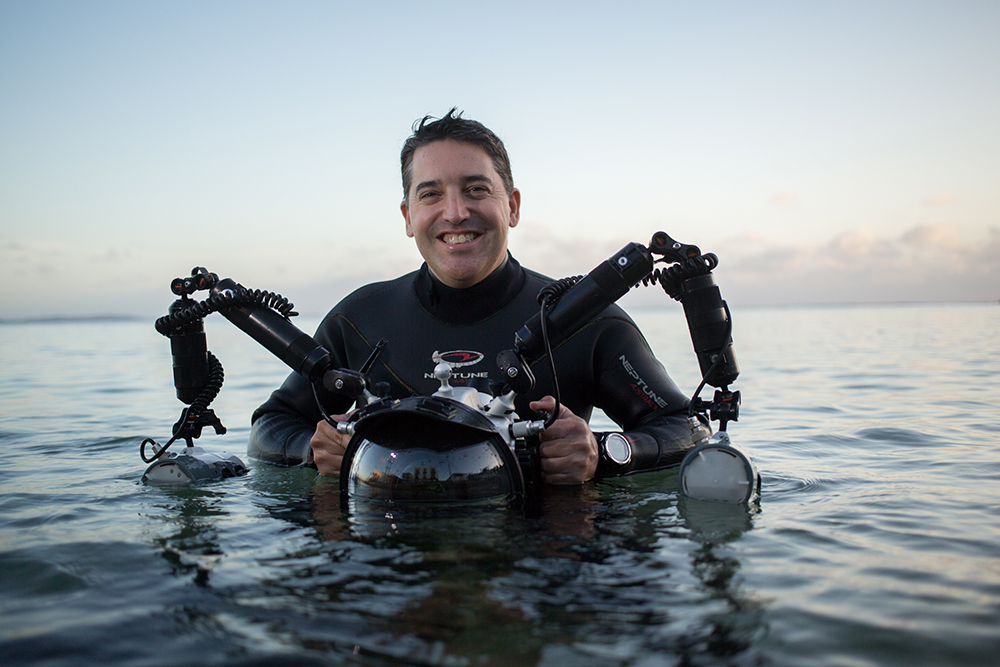
To find out more about Scott and his photography we interviewed him for Eye for the Light.
What or who has inspired you or your photography?
I think there are so many inspirational photographers and artists that continue to astound and amaze us with their beautiful representation of our natural world. I remember seeing Paul Nicklen’s images of Narwhals from a remote part of the Arctic at an exhibition many years ago, and thought to myself “I want to do that” and the more I knew about their back story and what it involved to capture something so unique, I was even more inspired and motivated to pursue my photography.
Your photography concentrates on the natural world with a focus on conservation. Was this always your primary interest or has this developed as your photography career grew?
The more I learned about the natural world and its inhabitants, and the more time I spent observing behaviour and getting to know my subjects, the more I became educated about the impacts on our wildlife and environment. This evolved quickly into a desire to educate and create awareness about the plight of our declining wildlife and their diminishing habitats. Now every aspect of my work has some form of conservation focus and I use my photography as a platform to protect and educate.


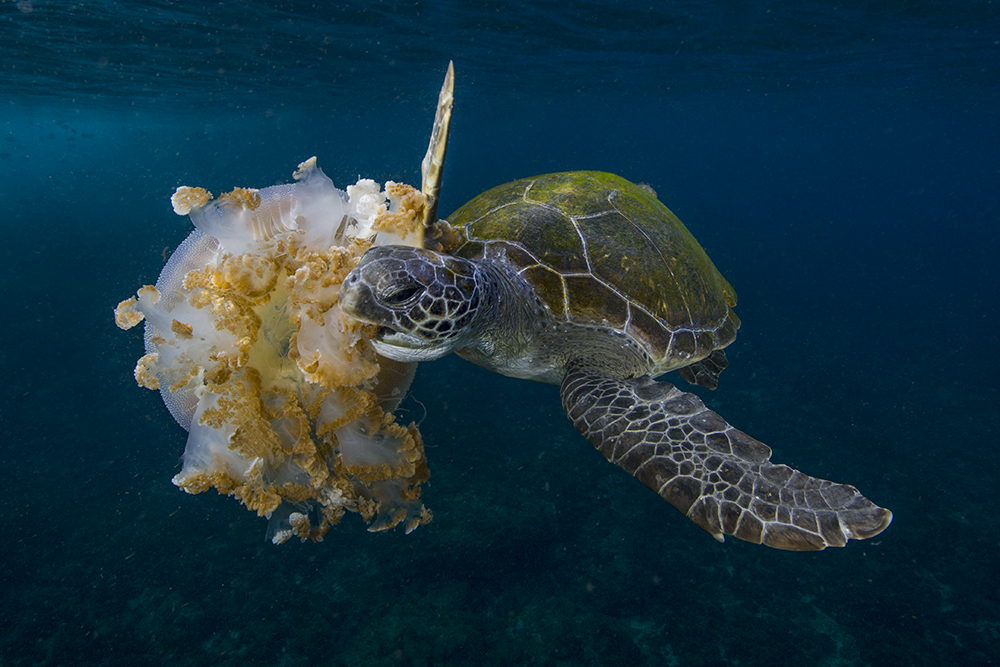
You do a lot of underwater photography and are well known for this. Would you consider this your main interest and forte?
Born and raised in Sydney, Australia, the ocean has always been a huge part of my life. Throughout my childhood I was regularly in the water, interacting with marine life, seeing what the ocean had to offer. The more I was in it, the more curious I became. I have a passion for the underwater world, and it provides endless opportunities to explore and photograph the marine inhabitants and their changing environment. Over time my photography has evolved to include landscapes, aerial, astro and so many more genres. I thrive on representing the natural world from so many perspectives, and I would say that my work is quite varied these days, but I don’t think I will ever lose my affinity with the ocean.
A number of your images immediately come to mind. A B&W shot of a whale diving just below the surface in Tonga is particularly striking. Tell us about shooting that image and why you chose the B&W medium?
In a world of blue, its often hard to separate the inhabitants from their environment. Black and white photography lends to the contrasting subject matter and this vast environment which lacks depth. A whale is dark on top and white underneath, in an atmosphere where light is diffracted by water. Black and white allows me to accentuate light and use the contrasting elements to give depth to the subject.
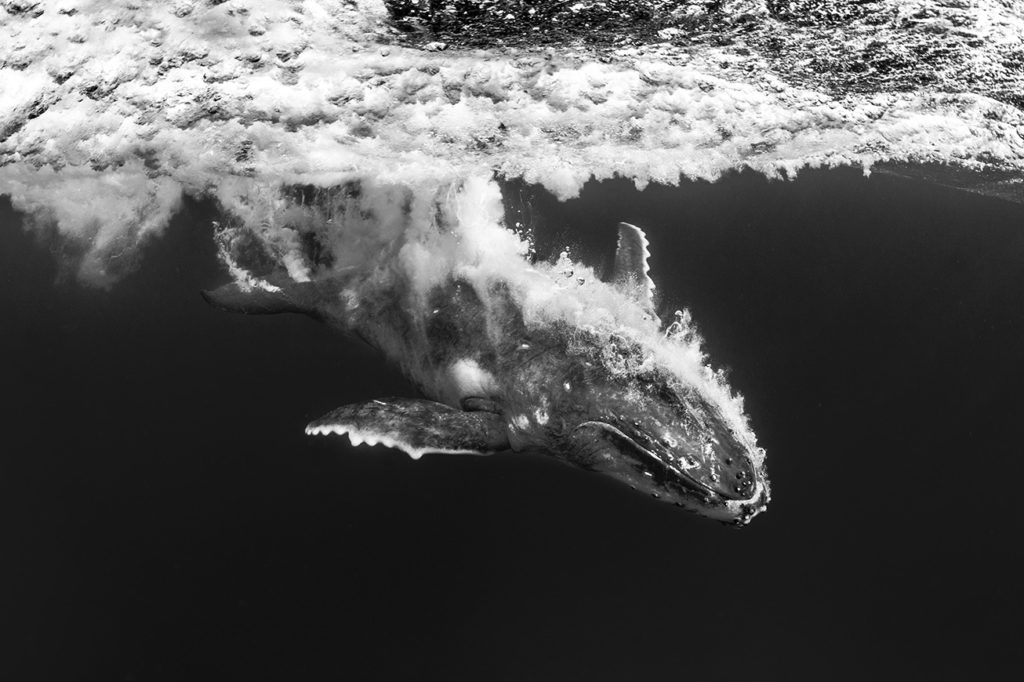
How can and how has your photography contributed to conservation of the seas and the planet?
Photography allows me to explore many avenues when it comes to conservation. From educating the world about a unique species, or showing the impacts of climate change on habitat, there are so many aspects that are derived from my work as a photographer. In a practical way my photography has contributed to research initiatives providing information to track species and individuals (ID’s) and behavioural data. It has been used as part of awareness campaigns and I have collaborated with several organisations to produce content for knowledge sharing programs. Whether I am taking fluke ID’s of whales or showing the impacts of plastic pollution on our oceans, I always support the efforts to preserve our oceans.
In recent years you have been doing a lot of drone photography. Is this your new interest and does it complement the underwater photography?
I see drones as just another tool of the trade. They provide such a unique perspective and allow photographers to achieve imagery that may have been inaccessible or expensive in the past. I use drone photography and videography on various occasions for specific needs and in most cases under permit to comply with local laws and restrictions. But it is only one aspect of my work and I still use planes and helicopters when shooting aerial photography in many remote regions of the world.


Does aerial photography also have a role to play in spreading the conservation message?
I think aerial photography gives people a unique perspective, never seen before. It can show the impacts of natural disasters like fires and flooding or present the intricate features of a landscape. To be able to show an audience the extent of a river system with estuaries, streams and creeks or how the layers of a salt lake form as the water dissipates, is truly a remarkable way to see our world, and educate at the same time. Aerial photography allows me to combine photography, art, science and nature with my interpretation of the world.
Underwater and aerial photography seem to require different skill sets and approaches. Is that true and how do you approach each?
They are at extremely opposite ends of the scale, but like any genre of photography you build levels of skill and techniques that can complement each other. Underwater photography has an extra degree of difficulty as you need to control your physical self in the underwater environment, while accounting for all the changing factors. Light penetrates the water and varies differently than above the surface, with colour diminishing as you get deeper, plus you have a limited time you can be underwater. I think it is definitely one of the most skilful forms of photography. Aerial can be exciting – hanging out of a plane or helicopter may not be everyone’s idea of fun, but it is truly exhilarating. Shooting aerial is more about lens choices, how altitude affects your shots and being able to change your perspective to represent the same subject in many ways. In the end I think I love both equally.
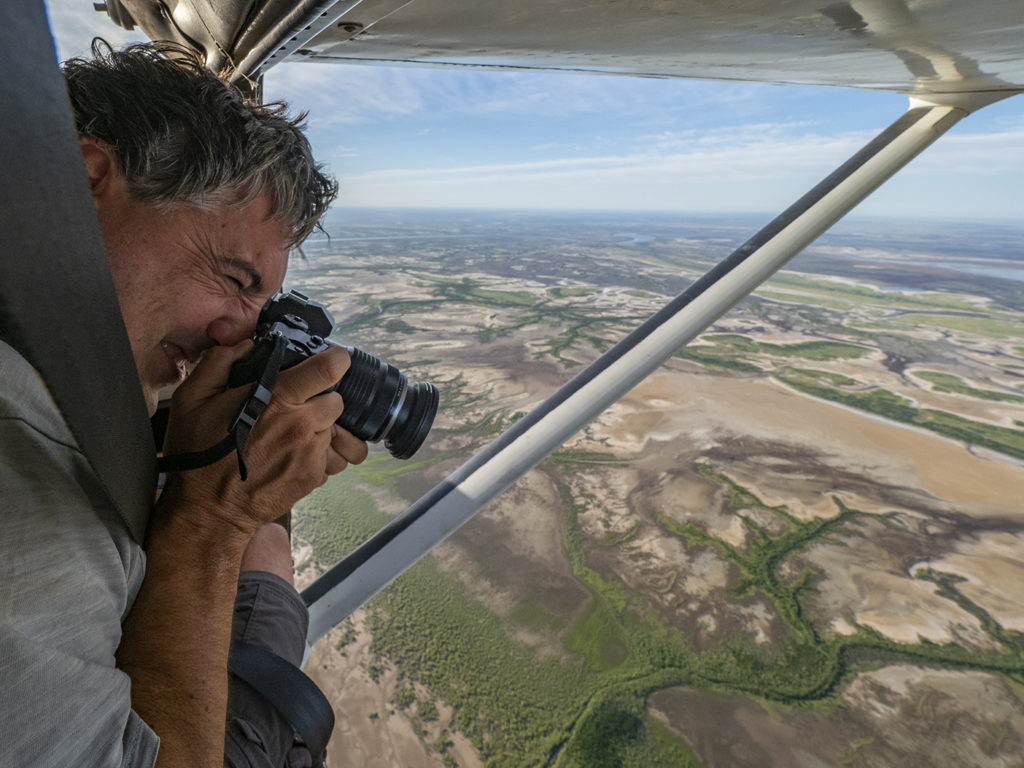
Over the last half a dozen years your photography has been recognised by a number of international awards. What impact has this had on your career and what advice would you give to other photographers about entering awards?
Being recognised for my work is very rewarding and winning several competitions over the past decade has had a positive impact on my work as a photographer. Not just for the accolades and the exposure but for the ability to constantly be learning, fine tuning and developing my craft. I think competitions keep you fresh and challenge you to evolve and look at the natural world more conceptually. There is such a high calibre of photographers out there producing amazing work, and sometimes competitions allow us to see these and be inspired.
How much of your time is spent filming moving images as opposed to shooting stills? Is there a great demand for moving images nowadays? Do you prefer shooting video?
There is more and more demand for moving images and I find that at least 25% – 40% of my time is devoted to videography. I think as a photographer, these days you need to diversify to keep up with the demands of the industry we are in. I predominantly shoot wildlife, aerial and underwater video for tourism bodies across the world and this has become a core part of my work. I do enjoy shooting video as it is a completely different mindset, and you need to think about a number of aspects that really don’t affect the still photo. However, video is extremely time-consuming and needs you to be an expert on sound, editing, shooting, composites and so much more. But when you do see the end result, it is very rewarding. To view some of Scott’s videos visit click here.
You’re very active on social media channels. Are these important and why? Which channel(s) do you find most useful as a photographer?
Social media is multifaceted. It can allow you to get a message out to a large, targeted audience to gain support and awareness for a cause or it can simply allow you to express yourself as an artist. But either way it is your unique voice and I believe should be used to educate and inform. I have used it to help support the bushfire appeal in Australia, and educate people about wildlife causes. I think most photographers use Instagram and FB to share their work and Twitter to start a conversation. But all social media platforms have their purposes and can be used to convey a message.
As photographers, we are also educators. Do you enjoy this element of your work and how much of your time do you spend on educating both fellow photographers and on education in conservation?
I am involved in education on many levels. Whether I am running photography workshops or speaking in front of school children, there is a need to continually share knowledge. Conservation is synonymous with wildlife and nature photography as we see the impacts every time we get out in the natural world. Imparting this knowledge on to others that may not have the same experiences is a perfect way to create a connection. I think as an educator, or subject matter expert, you have a responsibility to provide a balanced view of the world so others can make their own choices.
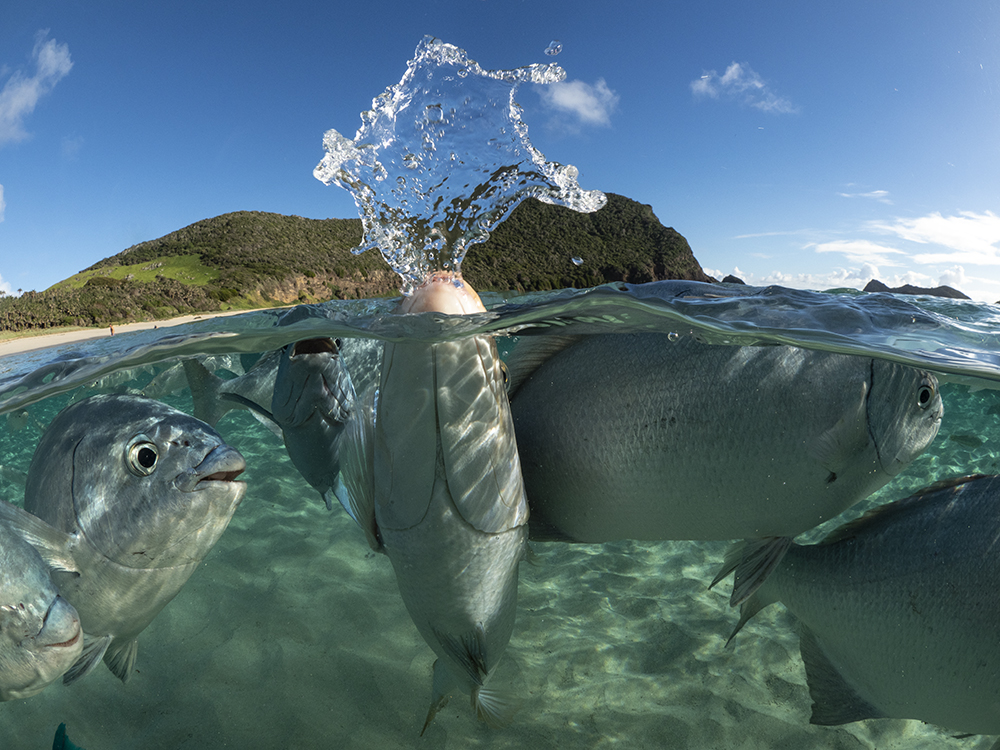
Where do you see your photography going in the next few years? Do you have any personal projects which you want to do?
I always have several projects on the cards at any time and I enjoy challenging myself across many genres. But I also enjoy meeting and collaborating with other photographers, scientists, artists and educators. So, in the immediate future, I see my photography becoming more intertwined in this world and hope that it inspires others as well.
Is there anything else you’d like to add about yourself and/or your photography?
I always believe that travel opens the mind and I think as a photographer it inspires us to be creative. The more I travel and experience the natural world, the more I appreciate this amazing planet and go out of my way to protect it. I think as photographers we have a responsibility to share the world, both the positive and negative, with our audience as this often leads to others taking action.
If you’d like to find out more about Scott, hiss photography and his conservation work the visit: scottportelli.com

